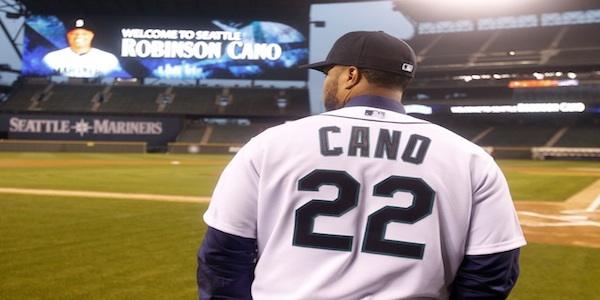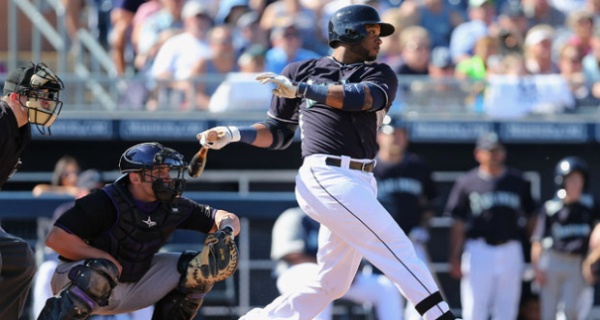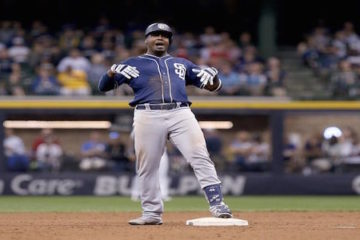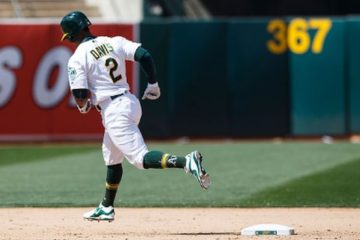2014 Fantasy Baseball: Is Matt Kemp on the Move?
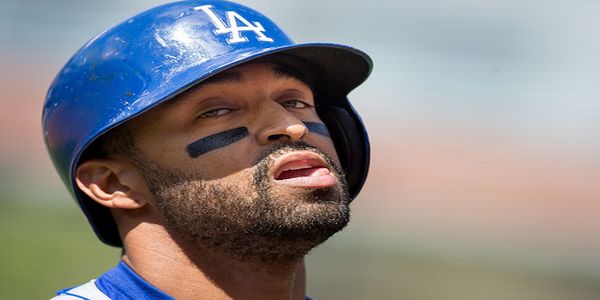
Fantasy sports is a pretty cutthroat business. There is little room for nostalgia. Yesterday’s stars can often become today’s albatross and nowhere is that more true than with the Los Angeles Dodgers. They have an outfield littered with big names, but only one of them is really producing. If you remove Yasiel Puig from the discussion, you see three big names that are no longer producing. You have to figure one of them will be moved by the deadline.
|
AVG |
OBP |
SLG |
HR |
Runs |
RBI |
|
|
.248 |
.314 |
.374 |
4 |
24 |
37 |
|
|
.273 |
.339 |
.429 |
8 |
38 |
40 |
|
|
.242 |
.278 |
.352 |
4 |
24 |
19 |
A quick perusal of the numbers reveals which one they will most likely be able to get rid of. All three have toxic contracts, so while that isn’t insignificant consideration for teams looking to add outfield depth, it really isn’t much of a consideration for the Dodgers. They have three bad contracts and they have Joc Pederson waiting in the wings in AAA. They need to move someone to make some space for Pederson to do his thing.
Out of the three, Matt Kemp has been garnering the most interest from other clubs. Let’s get back to that whole nostalgia thing. As a not so proud Matt Kemp drafter, I can tell you exactly what most people thought when drafting Kemp. They saw that 2011 season dancing in their eyes. It was an amazing season that saw him hit 39 home runs and steal 40 bases. He should have been the National League MVP. 2012 seemed to be just as good before injuries shortened his season. He played in only 106 games, but still slugged 23 home runs.
Unfortunately, he’s hit only 14 home runs since that season. Yes, he missed much of 2013 due to injury, but if you add up the plate appearances, you get more than enough for a full season. He’s also stolen only 14 bases in that same amount of time. One of the best power-speed threats in the game has been reduced to an overpaid mediocre corner outfielder. His OPS+ has dipped from a robust 172 in 2011 to 104 and 117 the past two seasons. Worse yet, I give you the numbers that fantasy owners never care about, but baseball teams should. Here are his fielding numbers since 2008 when he became a regular.
|
DRS |
UZR |
FRAA |
|
|
2008 |
9 |
-3.1 |
-3.2 |
|
2009 |
-3 |
5.1 |
7.0 |
|
2010 |
-37 |
-23.5 |
-9.0 |
|
2011 |
-5 |
-2.7 |
-8.3 |
|
2012 |
-13 |
-7.4 |
-7.0 |
|
2013 |
-6 |
-15.3 |
-5.2 |
|
2014 |
-21 |
-19.5 |
-3.5 |
What you see above are the three defensive metrics most commonly used to evaluate fielders today. John Dewan’s Defensive Runs Saved (DRS) also happens to be echoed in baseball-reference.com’s Rfield statistic. So, if you want to call that four you can, but I will settle for three. Ultimate Zone Rating (UZR) is most commonly found at fangraphs.com and Fielding Runs Above Average (FRAA) can be found at baseballprospectus.com. While the three seem to vary widely in degree, they all paint the same general picture. Matt Kemp is definitely one of the worst defensive outfielders in the game.
Of course, the coaches and managers saw fit to give him Gold Gloves in 2009 and 2011. We can judiciously call that generous even if he earned positive scores in two of the three statistical platforms in 2009. If Kemp could ever be called an above average performer, those days have long since past. He’s played all three outfield positions this season and has been a negative impact performer across the board.
What this means for you is pretty simple. While you may not pay attention to this fielding mumbo jumbo, teams certainly do. No team in their right mind would put him in center field moving forward, and teams would have to be careful in general about putting him in the outfield period moving on out. This would seem to limit him to the American League where teams at least have the option of using him as a designated hitter. This is definitely important given that he has five years and 107.5 million left on that contract.
Possible Matches
MLB Trade Rumors has consistently listed the Boston Red Sox and Seattle Mariners as the most likely suitors for Kemp’s services. Between the two, the Red Sox would likely be the place where Kemp would be the most successful, but the Mariners make the most sense. The outfield has been a revolving door with the Mariners trying the light hitting Dustin Ackley in left field for the time being.
The problem for the Mariners is two-fold. First, Safeco Field is not necessarily a better hitting environment than Dodger Stadium. The offensive numbers likely wouldn’t be much better in Seattle than they currently are in Los Angeles. Secondly, while he is a big name, he doesn’t represent a significant improvement. Essentially you would be adding a big name to pair with Robinson Cano, but he wouldn’t offer you Cano-like production. Still, you would be paying Kemp, Cano, and Felix Hernandez around 60 million a season. That doesn’t count what the Dodgers might contribute.


